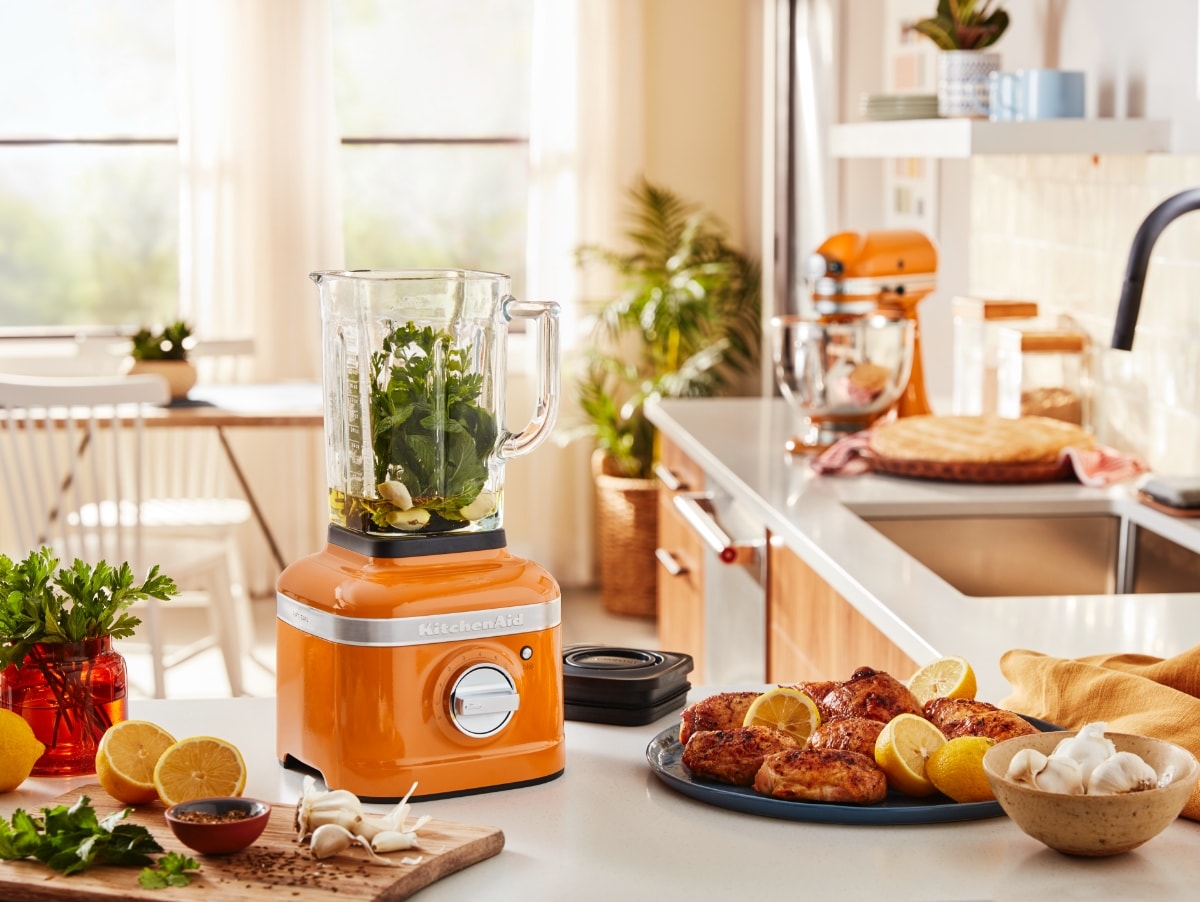

Have you been faced with the dilemma blender vs juicer? As the new year and the inevitable promise of a new start lurks just around the corner, there's no better time to start thinking about what you can do to boost your health.
In terms of packing in as much fruit and veg as possible, the decision best blender vs best juicer is a common one.
There's no doubt about it, blending and juicing are both great habits to get into. Be it for a great way to kick start your day, or as a healthy alternative to that 3pm cup of joe, they're a brilliant, healthy alternative to many caffeine or sugar filled drinks.
But when deciding between the two, it can be tricky, as there are many pros and cons to both. So we've complied this handy little guide with the info you really need to know – from nutrition to cleaning, so you can make the best decision for you.
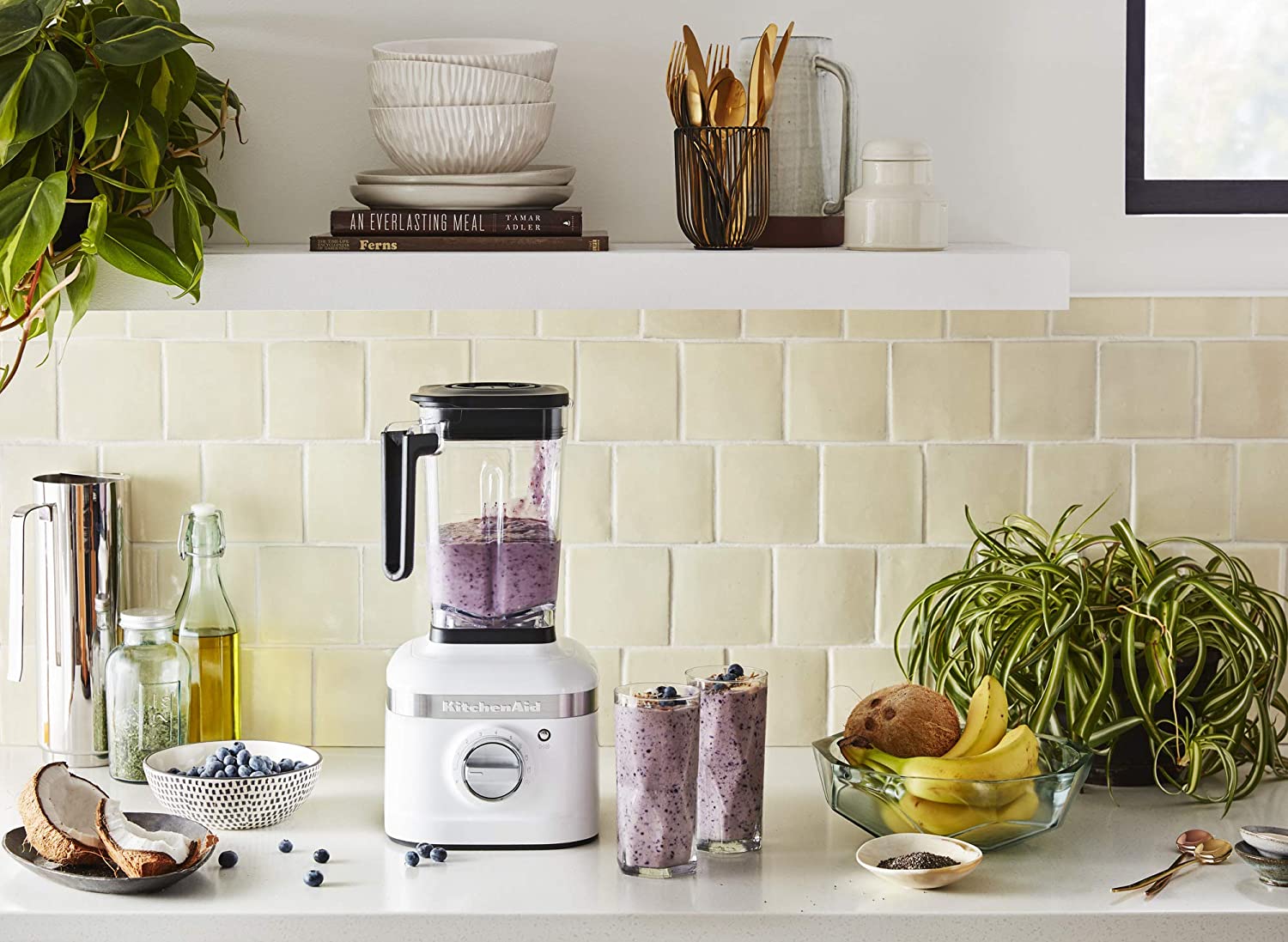
Blender vs juicer: what is the difference?
The key difference between a blender and a juicer is that blenders blend the entire piece of fruit or veg for you to drink, whereas a juicer extracts and discards the fibre pulp.
This extra process of extraction generally means that juicers are bigger and bulkier, and means that the health benefits of the drinks created are different. A blender will create a thick smoothie often with bits in, whereas a juicer will create (yes you guessed it) a juice, which is much thinner in texture and can generally be drank quicker.
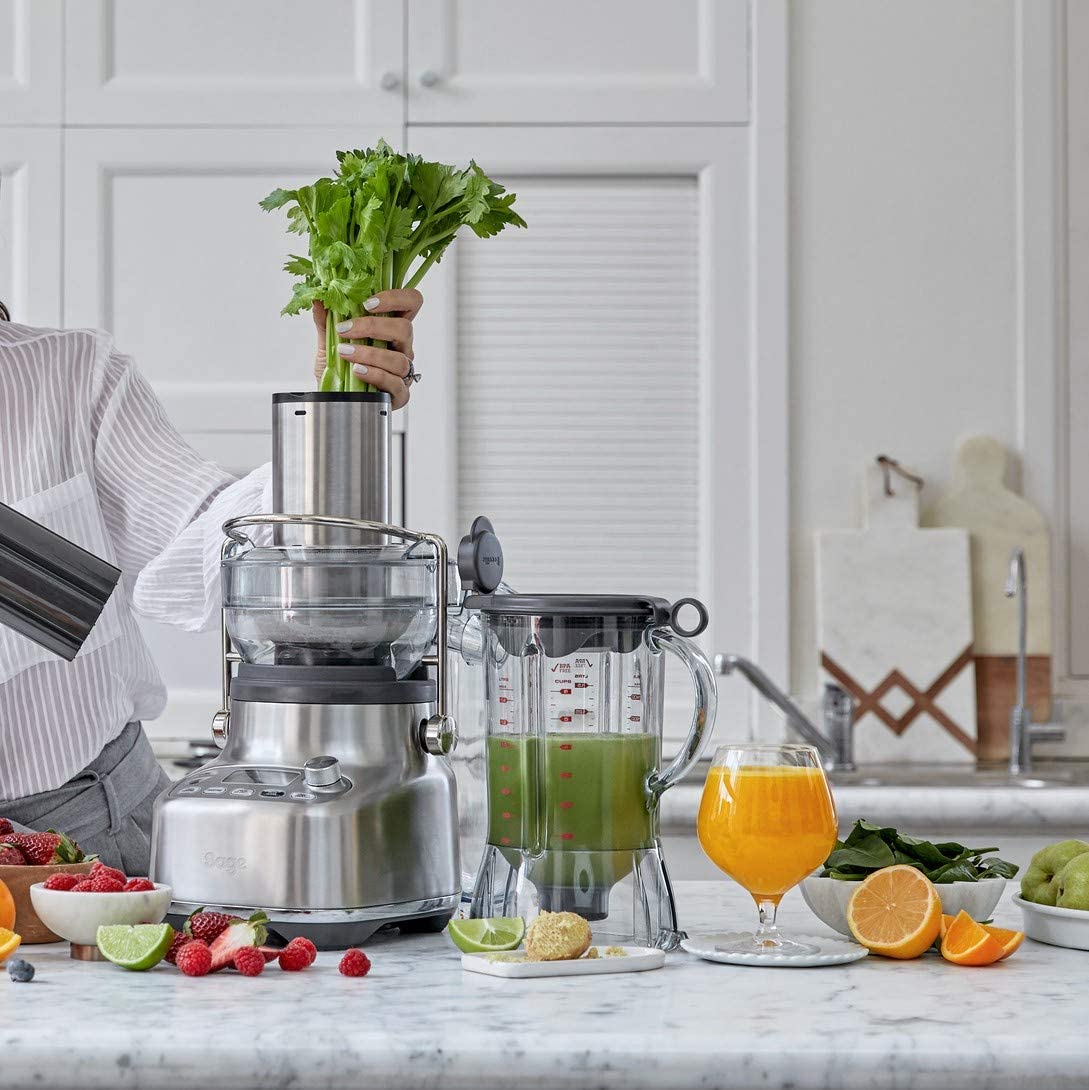
Blender vs juicer: which is healthier?
One isn't necessarily healthier than the other, but the way that the kitchen appliances break down the fruit and veg means that the drinks they create have differing nutritional value.
Blenders break down everything that you put into them, including the fibre and pulp. The fibre left in the drink works to release energy slowly, preventing an immediate sugar high and then low, and making your feel full up for longer. Energy is released evenly and slowly. The fibre both slows down and helps to clean your digestive system, removing any toxins as it goes.
Juicers, however – such as the best orange juicers – extract the fibre and pulp from your fruit and vegetables. This means that the drink is densely packed with vitamins and minerals, so you'll be able to fit a lot more fruit and veg (therefore a lot more goodness) into a glass, than you would with a blender. If you have any digestive problems, removing the fibre could be a good idea to give your digestive system a break while still getting lots of nutrients.
Blender vs juicer: which is better value?
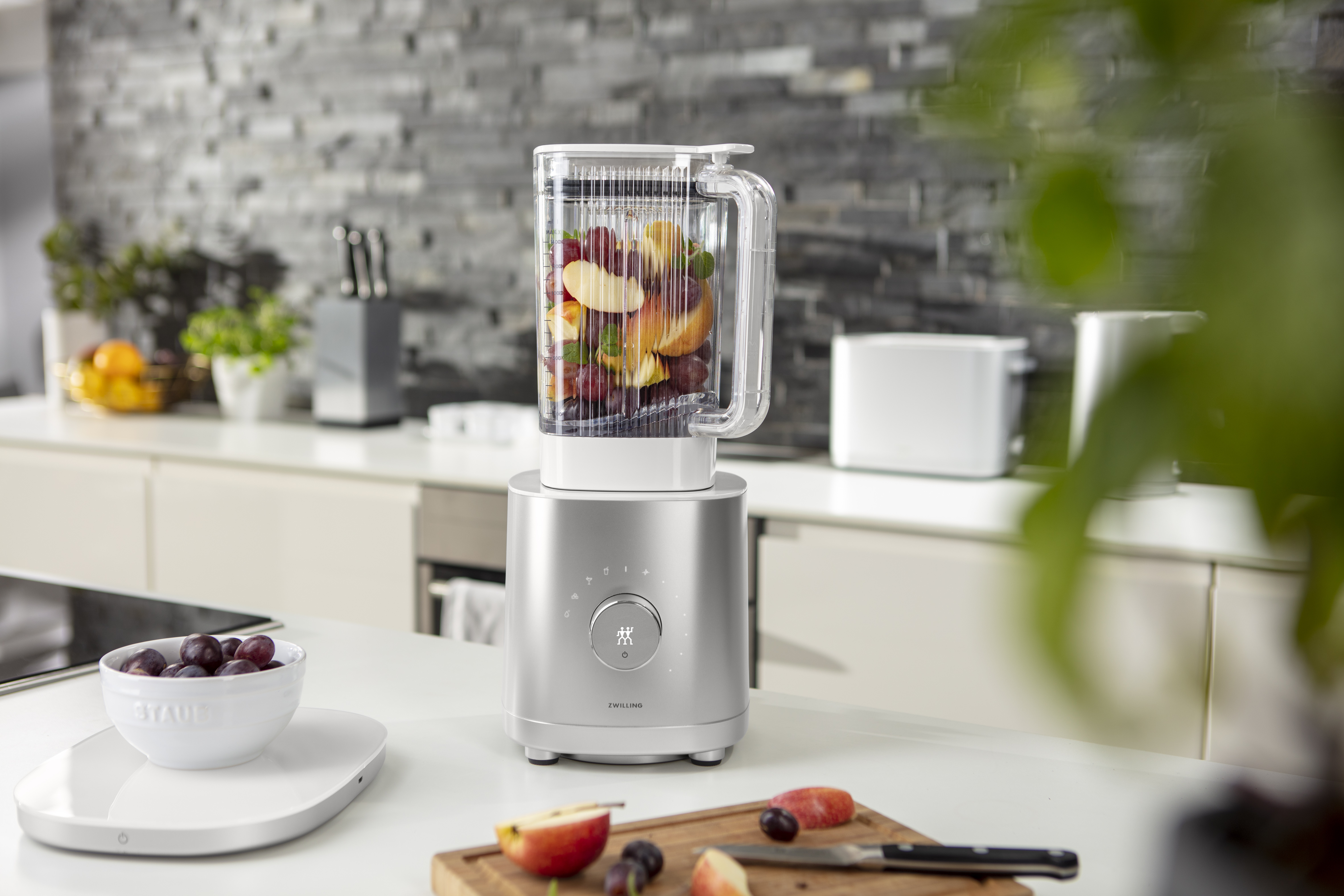
There are many brands and models of blenders and juicers out there, all at various price points with various capabilities.
That said, in general juicers are more expensive than blenders, as there is more components to them. Some people get frustrated with the waste created by juicing as the pulp and fibre is removed.
If you want to make the most of every part of your fruit and veg to prevent waste, go for a blender. But if you want a drink that's highly concentrated in nutrients and will release energy quickly, go for a juicer.
Blender vs juicer: which is easier to use?
Blenders are easier to use as they have less components. You can buy blenders, such as the Nutri Bullet at Amazon, which combine the blender and a cup in one – you simply switch the blade with a lid and you're good to head out the door. Stand blenders are also very straight forward to use - you simply fill the blender with fruit and veg (and milk or water or yoghurt etc) blend, pour and serve.
Juicers like Ninja cold press juicer from Ninja Kitchen, are a little more complex to use. The appliance breaks down the fruits and veg, then extracts the pulp and filters it into a built-in compartment. The usable part of the fruit or veg is then sieved into a jug/glass for you to use. You will then need to discard of the pulp.

Blender vs juicer: which is easier to clean?
Blenders can be very easy to clean. If you have a model with a blender and cup in one, this really minimizes on washing up and makes smoothie making really simple.
As juicers have more elements to them, they can be more tricky to clean. You have to empty out the pulp and clean the sieve, juicer and jug too, meaning juicing is generally a more time consuming feat.
Join our newsletter
Get small space home decor ideas, celeb inspiration, DIY tips and more, straight to your inbox!

After joining Real Homes as content producer in 2016, Amelia has taken on several different roles and is now content editor. She specializes in style and decorating features and loves nothing more than finding the most beautiful new furniture, fabrics and accessories and sharing them with our readers. As a newbie London renter, Amelia’s loving exploring the big city and mooching around vintage markets to kit out her new home.
-
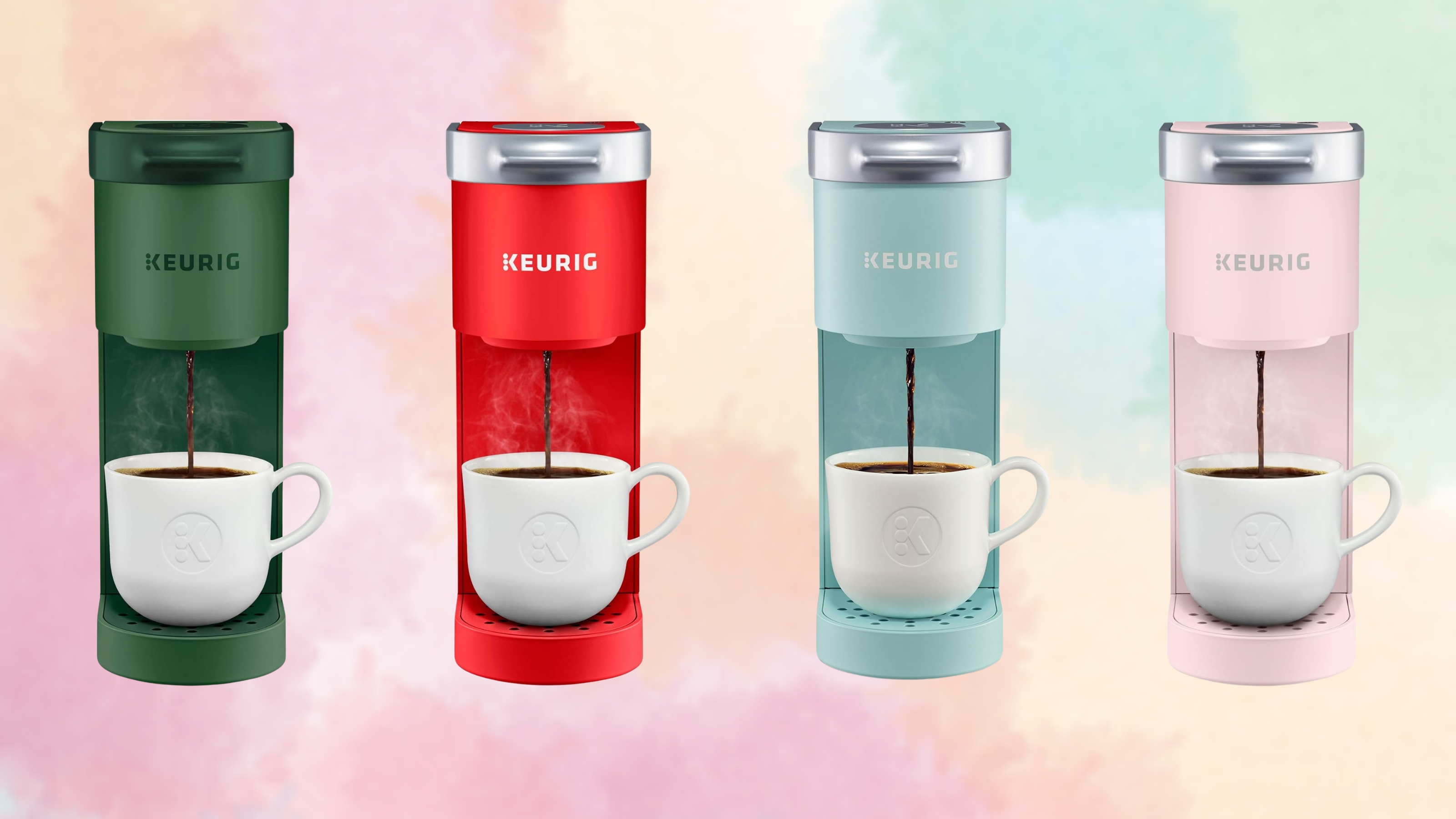 Amazon's bestselling Keurig K-Mini Coffee Maker sale is on now with 40% off — here's why 97,000 customers love it
Amazon's bestselling Keurig K-Mini Coffee Maker sale is on now with 40% off — here's why 97,000 customers love itAmazon's bestselling Keurig K-Mini Coffee Maker sale is on now and offers 40% off. Here's why we and thousands of customers love it. Plus, some alternatives
By Punteha van Terheyden
-
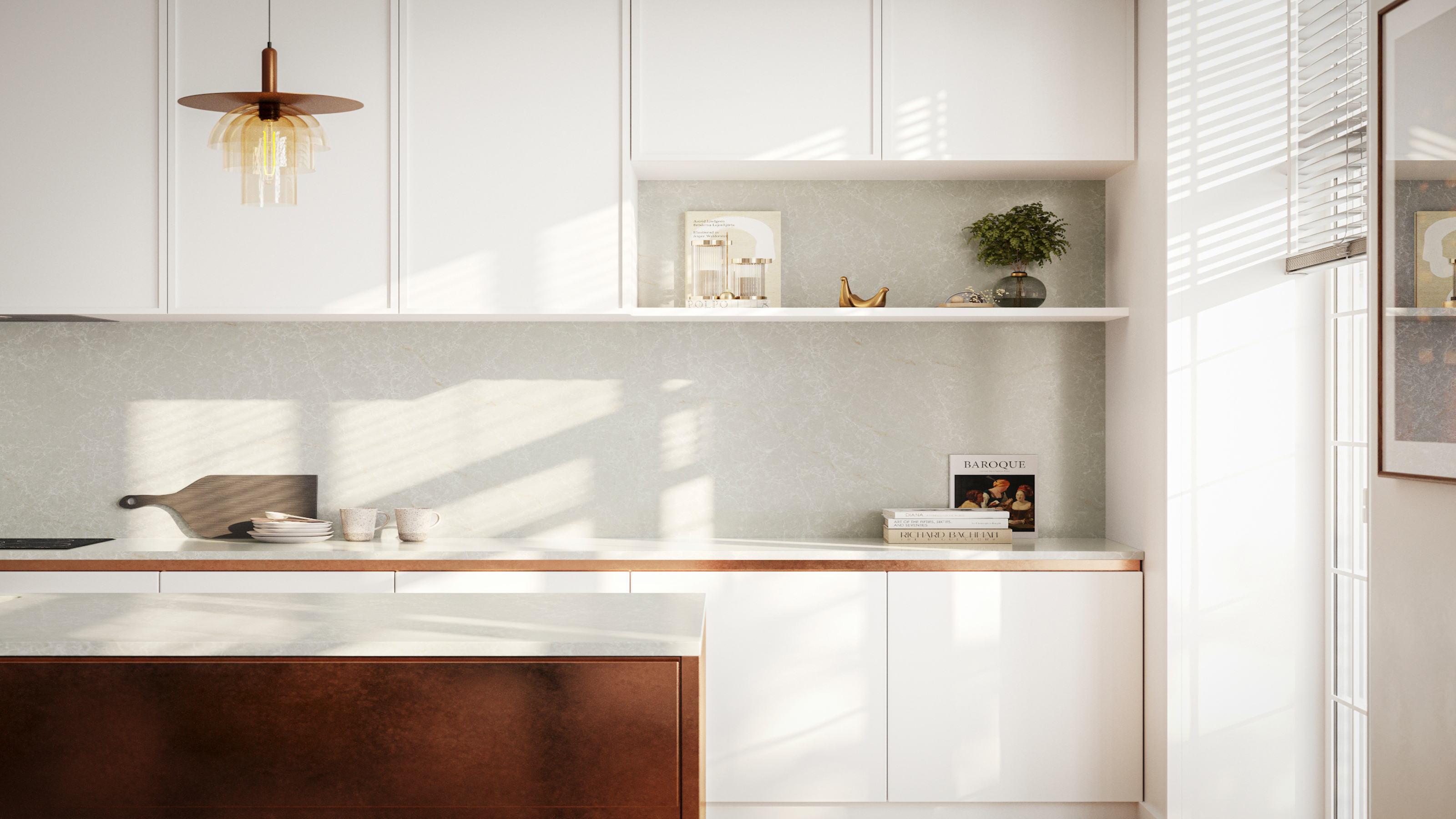 Pros reveal the 10 kitchen cabinet design mistakes to avoid, and what to do instead
Pros reveal the 10 kitchen cabinet design mistakes to avoid, and what to do insteadThe 10 common kitchen cabinet design mistakes when choosing and installing kitchen cabinets. Solutions to problems and how to avoid the issues.
By Isabella Charlesworth
-
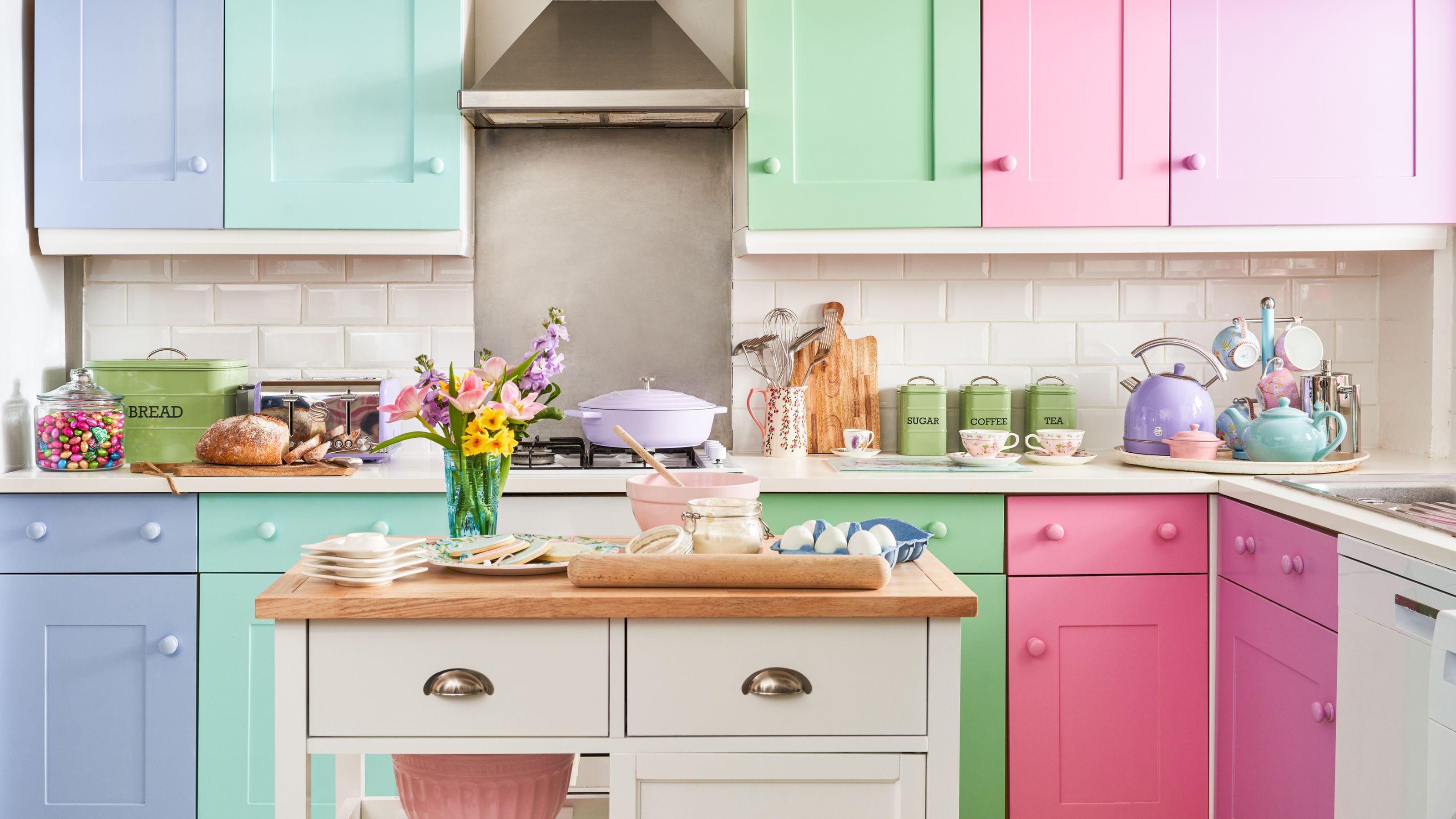 10 pretty pastel kitchen ideas that are utterly dreamy and delicious
10 pretty pastel kitchen ideas that are utterly dreamy and deliciousIce cream sweet pastel kitchen ideas are perfect for adding playfulness. We've asked designers for their favorite ways to bring these in light shades
By Eve Smallman
-
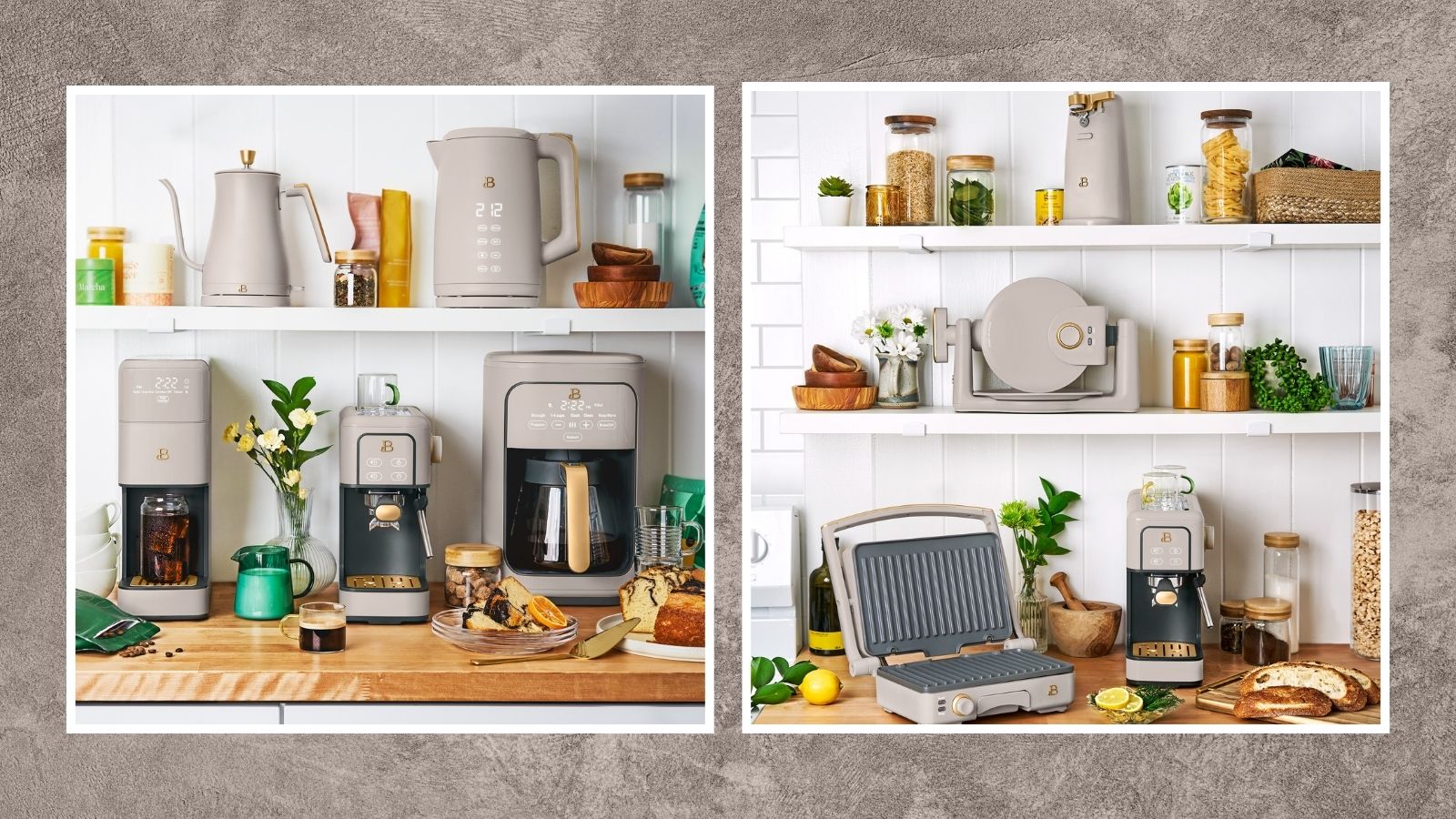 New Beautiful by Drew Barrymore kitchen appliances just dropped, and they'll take your brunch game to new levels
New Beautiful by Drew Barrymore kitchen appliances just dropped, and they'll take your brunch game to new levelsNew Beautiful by Drew Barrymore kitchen appliances just dropped — learn all about the waffle maker, espresso maker, electric can opener, and space-saving kitchen island
By Danielle Valente
-
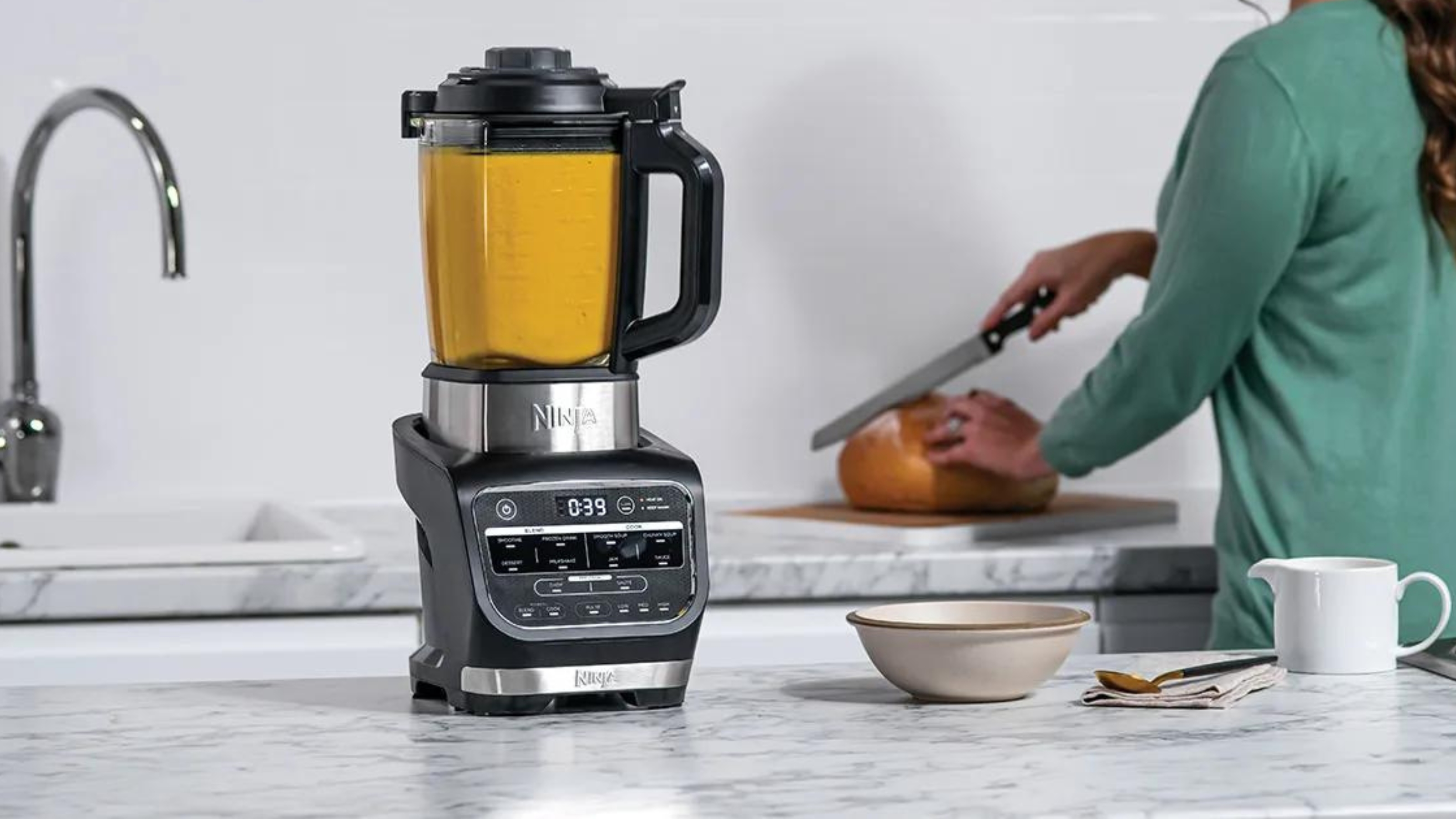
 The Ninja Foodi hot and cold blender has turned my kitchen into a fancy no-waste restaurant
The Ninja Foodi hot and cold blender has turned my kitchen into a fancy no-waste restaurantUsing the Ninja Foodi cold and hot blender, I've made hearty soups from just 65 cents per serving
By Christina Chrysostomou
-
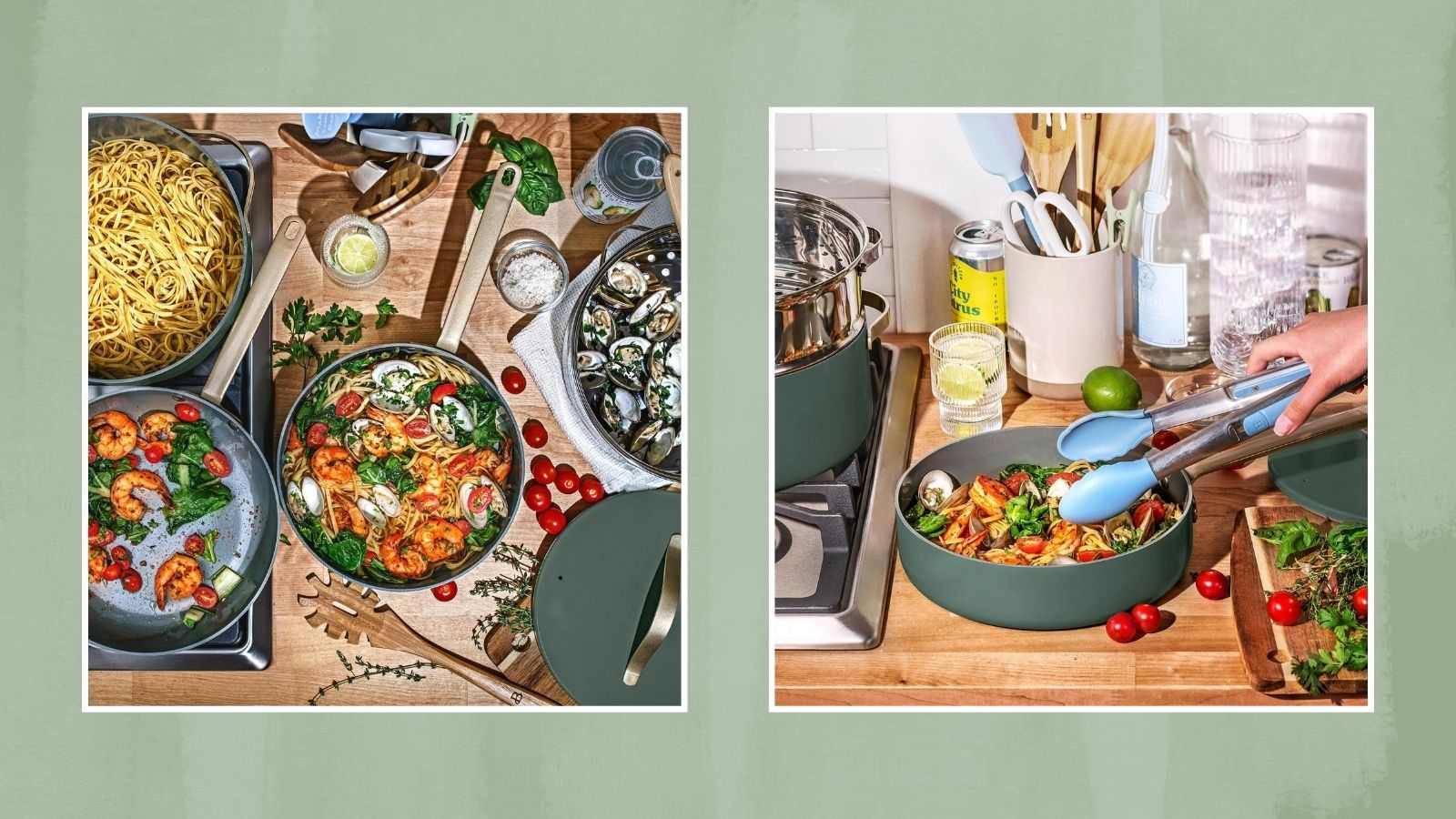 Drew Barrymore drops a new color in her Beautiful kitchen line just in 'thyme' for the holidays
Drew Barrymore drops a new color in her Beautiful kitchen line just in 'thyme' for the holidaysCheck out our edit of the Drew Barrymore cookware set and kitchen appliances in the limited-time "thyme green"
By Danielle Valente
-
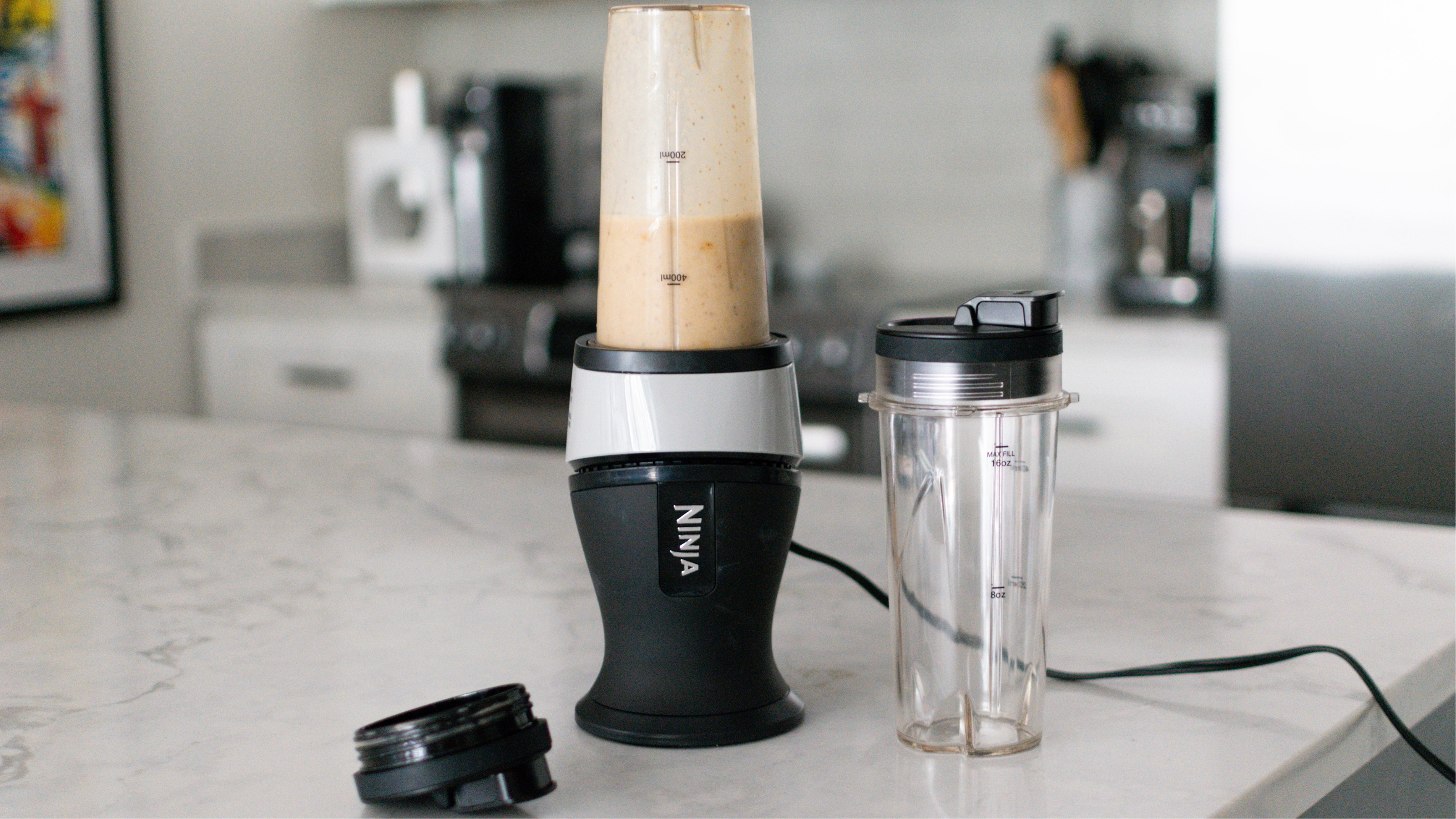
 The Ninja Fit blender is so compact that I no longer dread pulling out this type of appliance
The Ninja Fit blender is so compact that I no longer dread pulling out this type of applianceLearn more about the Ninja Fit blender in our comprehensive review after testing the kitchen gadget for several weeks and understanding all of its pros and cons.
By Heather Bien
-
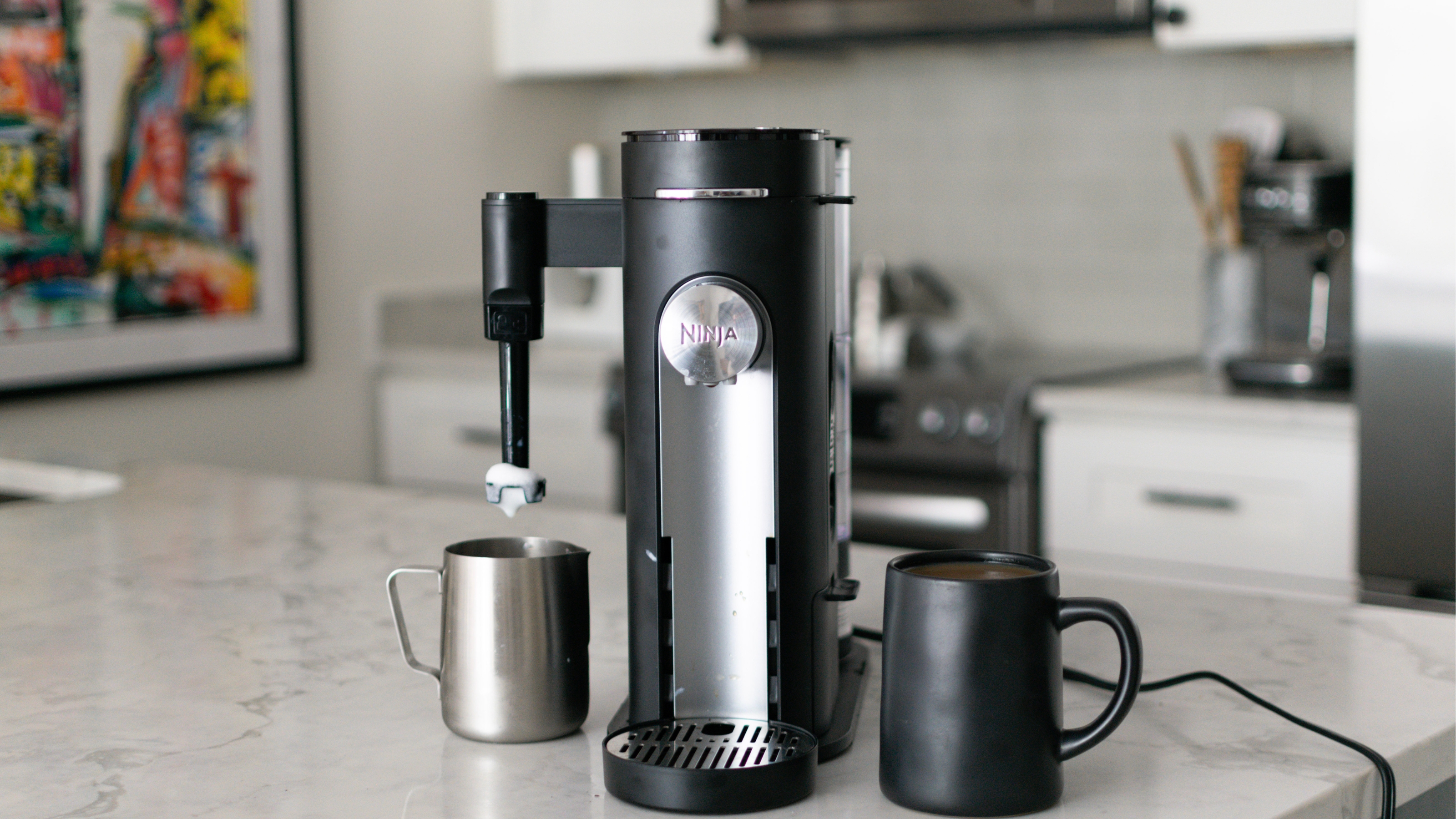
 Review: this Ninja pods and grounds coffee maker has solved our bean debate
Review: this Ninja pods and grounds coffee maker has solved our bean debateThe Ninja pods and grounds coffee maker makes everything from hot black coffee to milky brews with a frothed top and even iced drinks. See what else it's capable of in our review.
By Heather Bien